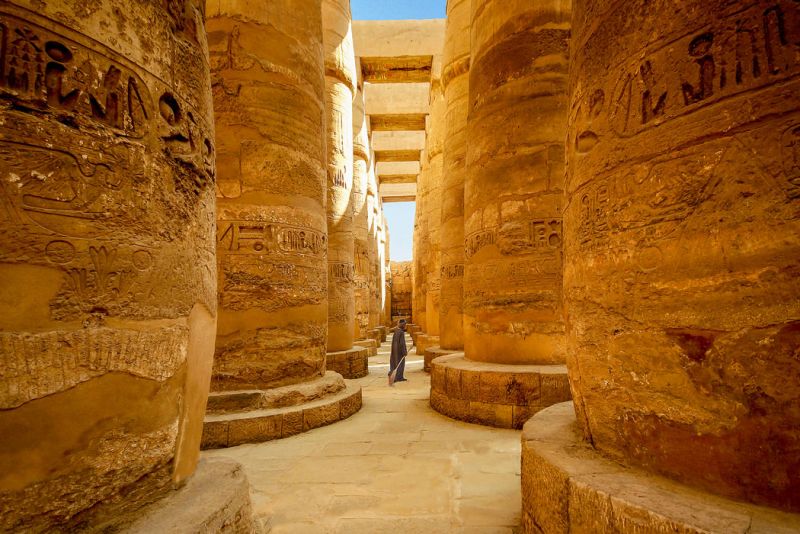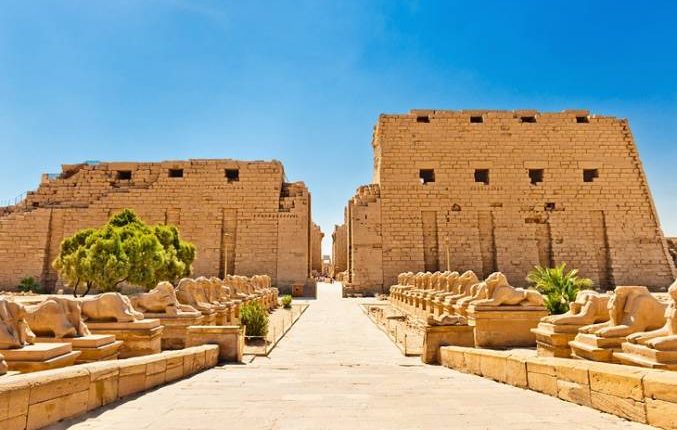Egypt plans to reopen the 2,700-meter-long Sphinx Avenue (or Rams Road) by the end of the year, which connects the Karnak and Luxor temples in eastern Luxor, Tourism and Antiquities Minister Khaled El-Anani said.
Comparing it to April’s Pharaoh’s Golden Parade, El-Anani said the opening of the avenue would be huge, as if it were another parade.
The Ministry of Tourism has met with several companies to organize the event, two proposals have already been received.

Karnak Temple was the most important place of worship in Thebes (now Luxor). This is the temple in which the great Lord Amon, Bishop Thebes, was consecrated, so the temple achieved great wealth, and its priests became a significant political force.
Thebes was a city that after the First Intermediate Period belonged to the kings who united Egypt, and thus they became one of the most important cities in Egypt, and in this position it will remain for most of ancient Egyptian history. In the light of the oldest evidence of the existence of the temple, from the reign of King Intefa II (2112-2063 BC), ie to the beginning of the Middle Kingdom (2055-1650 BC), to the Greco-Roman period ( 332 BC) – 395 BC).
This temple was designed according to the royal patronage of huge construction projects. It often expanded during the reign of each king of the modern state (1550 – 1069 BC).
The temple is located on the east of the mainland of Luxor, and, as in most ancient Egyptian temples, the axis of the temple was east-west. Ancient Egyptian temples were a model of the universe, so the design of the temple reflects the path of the Lord of the Sun across the sky. The temple is unique in that it has a north-south axis, separated from other temples.
On the other hand, there is another temple called the Luxor Temple. In the past, he was known as “Amon in Opet I”. Amon on the horizon. The two temples were connected by a road decorated with statues of the Sphinxes.
This road was used during one of the most important holidays of the ancient Egyptian calendar – the feast of Opeta. Rams Road is the road that connects the Luxor Temple with the Karnak Temple.
The statues were built in the form of a sphinx with a ram’s head, and the rams here symbolize the god Amon, perhaps to protect the temple and highlight its axis. The ancient Egyptians called this road “Wat Natr”, which means the way of God. As for the way of the sheep in the temples of Karnak, it was known as “Ta-Mitt-Rahat”.
The skill of the ancient Egyptians in the use of stone, which is manifested throughout the temple, according to the website of the Ministry of Tourism and Antiquities, the Egyptians succeeded in engraving the inscriptions covering its walls and statues that adorn it. The height of these huge columns is 15 meters, with the exception of twelve middle columns, which are 21 meters high.
Amenhotep III began construction of this hall “1390-1352 BC” of the eighteenth dynasty, and its decoration dates back to the reign of King Network I in 1294-1279 BC and Ramses II “1279-1213 . B.C.” of the nineteenth dynasty.
The magnificent 30-meter obelisk Hatshepsut was built next to the hall between 1473-148 BC.
In the eastern part of Karnak we can see a temple known as Brother Meno, built by Thutmose III (1479-1425 BC) and dedicated to the consecration of various deities in addition to his ancestral kings, as well as his own consecration.
In fact, Karnak was a complex of temples that includes another temple of Lord Hons in the southwest corner, next to the temple of Opet, which was built in the Greco-Roman era for Opet, a goddess represented as a hippopotamus. In the center there is still a beautiful sacred lake, where priests were cleansed before performing temple rituals. Many other temples and small chapels are scattered around Karnak, making it a veritable open-air museum.

